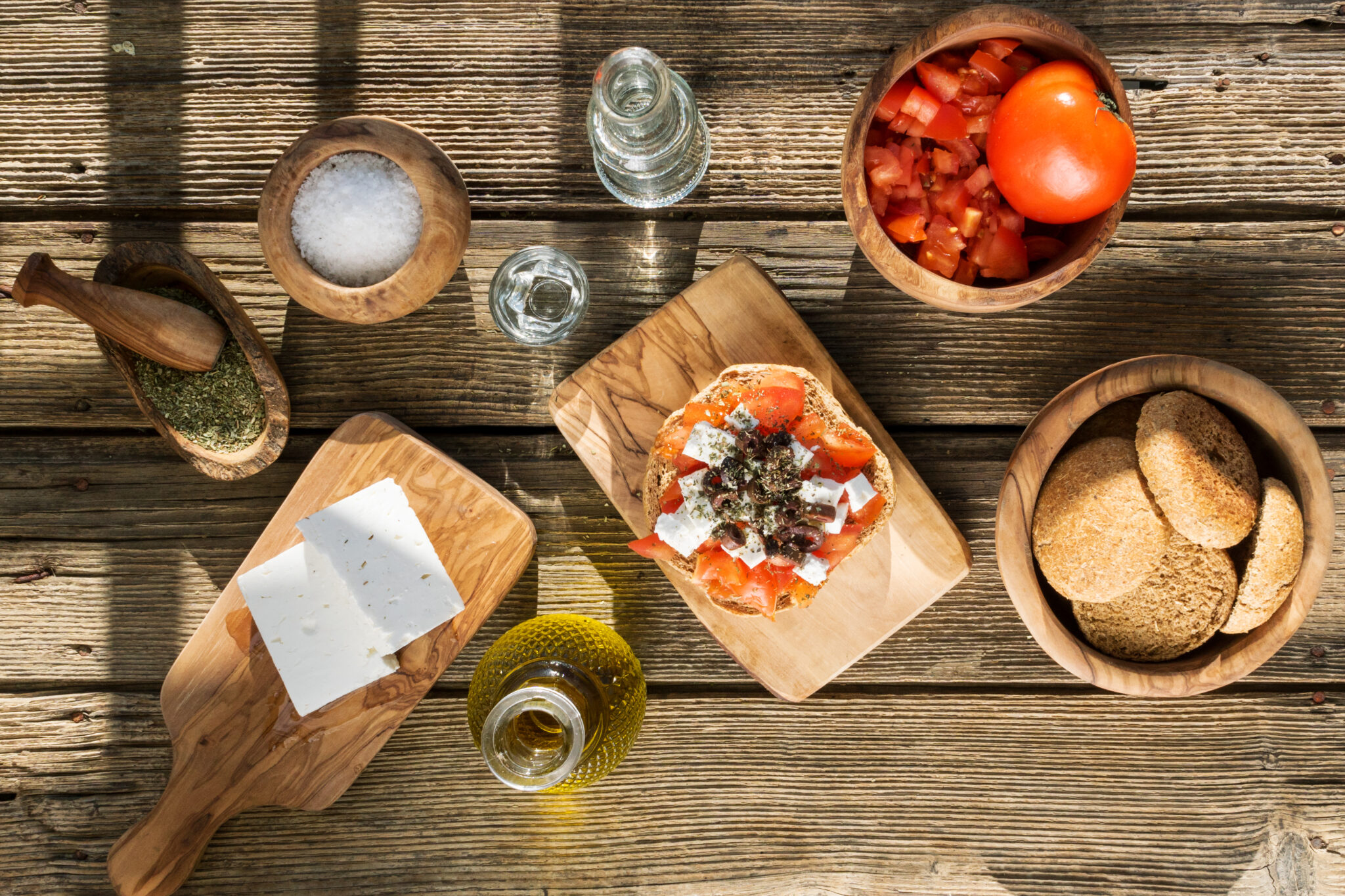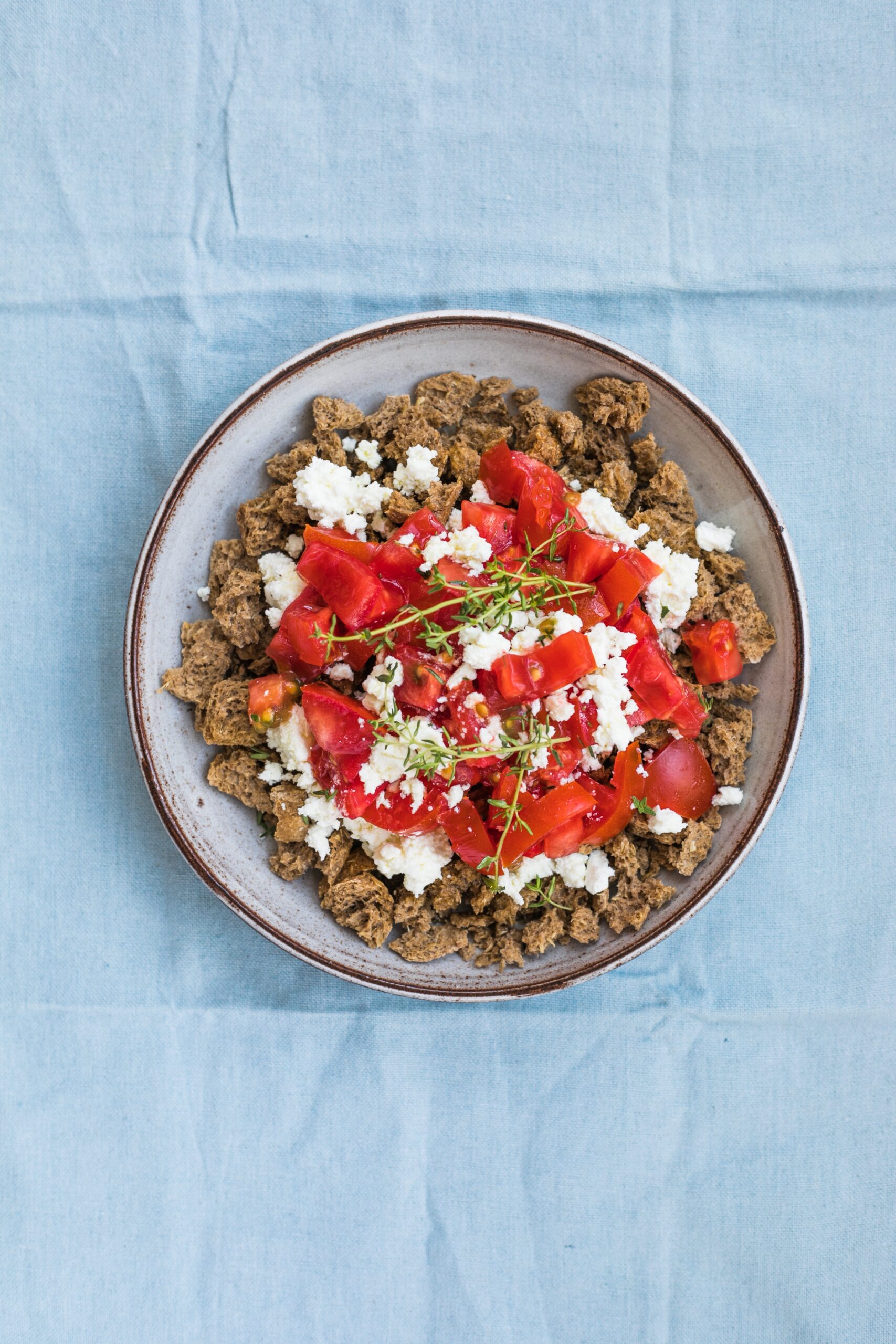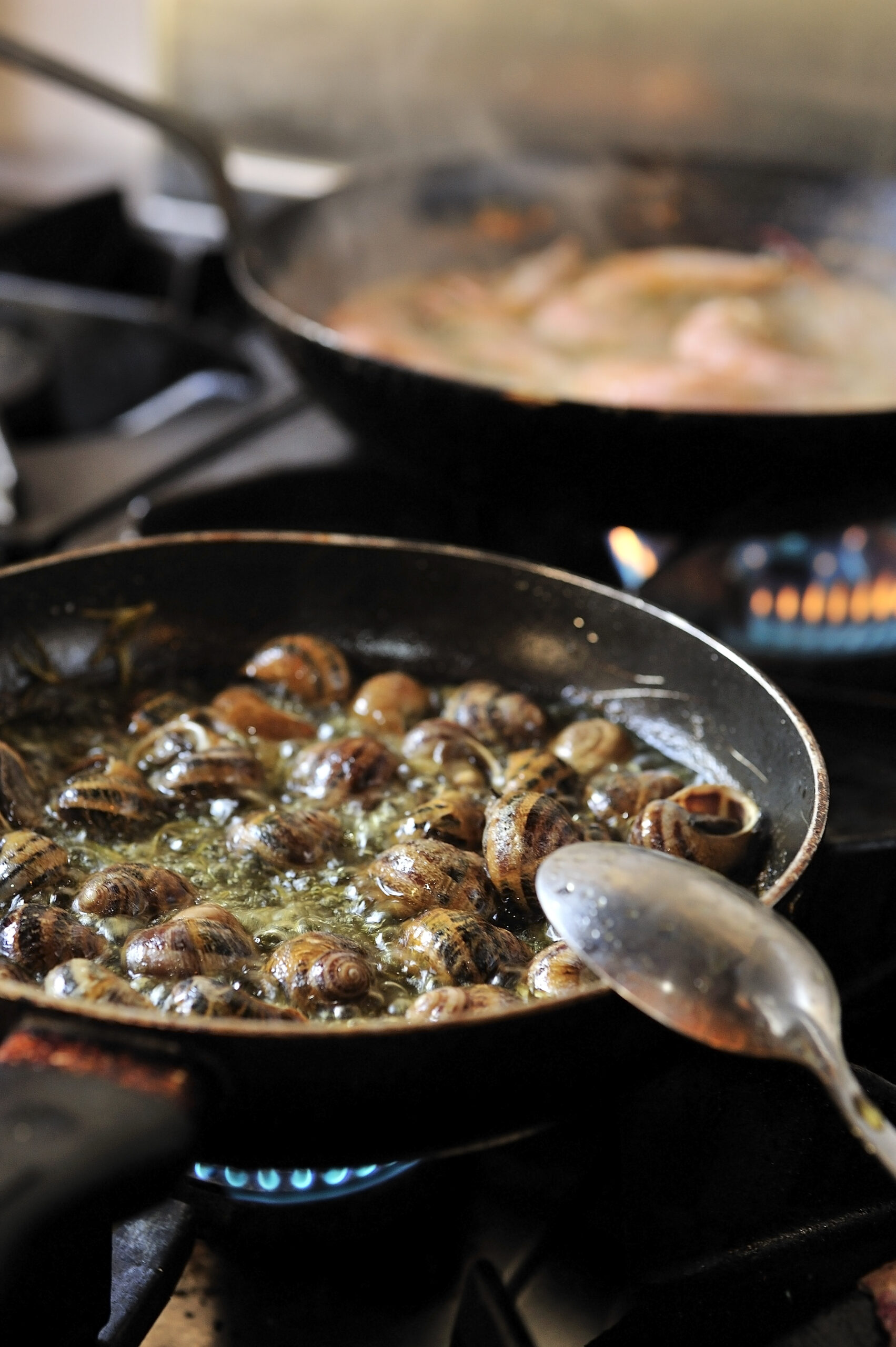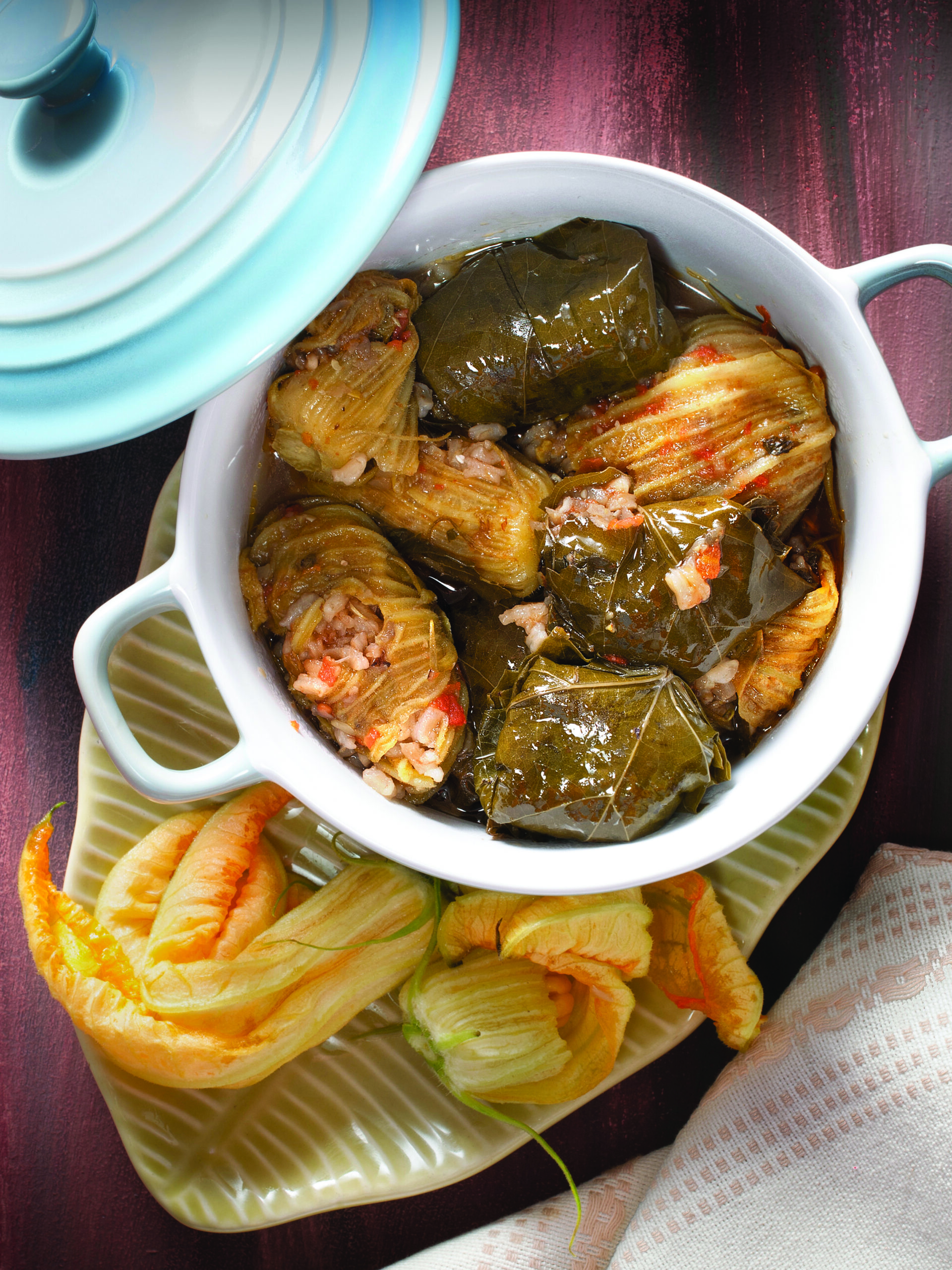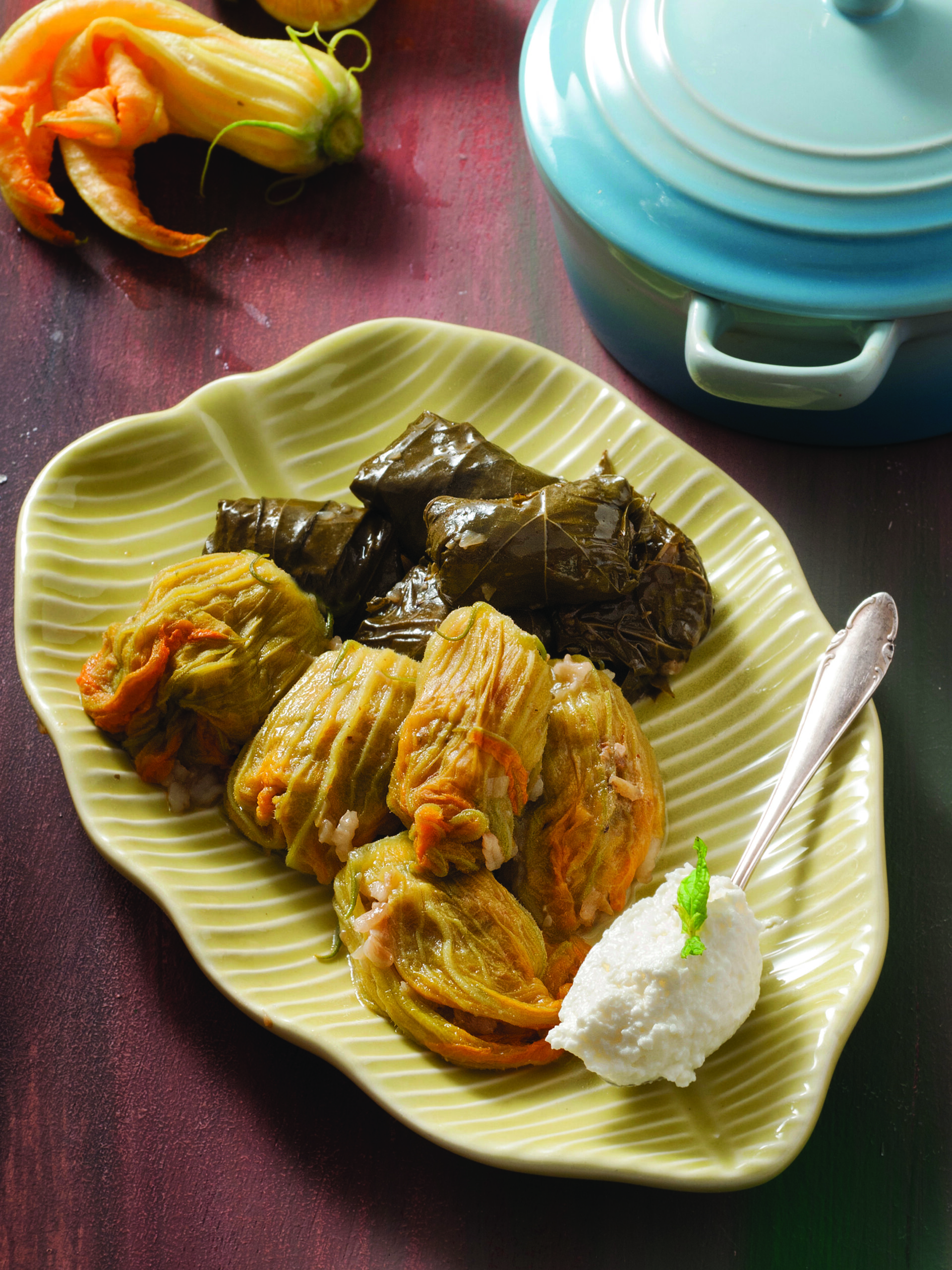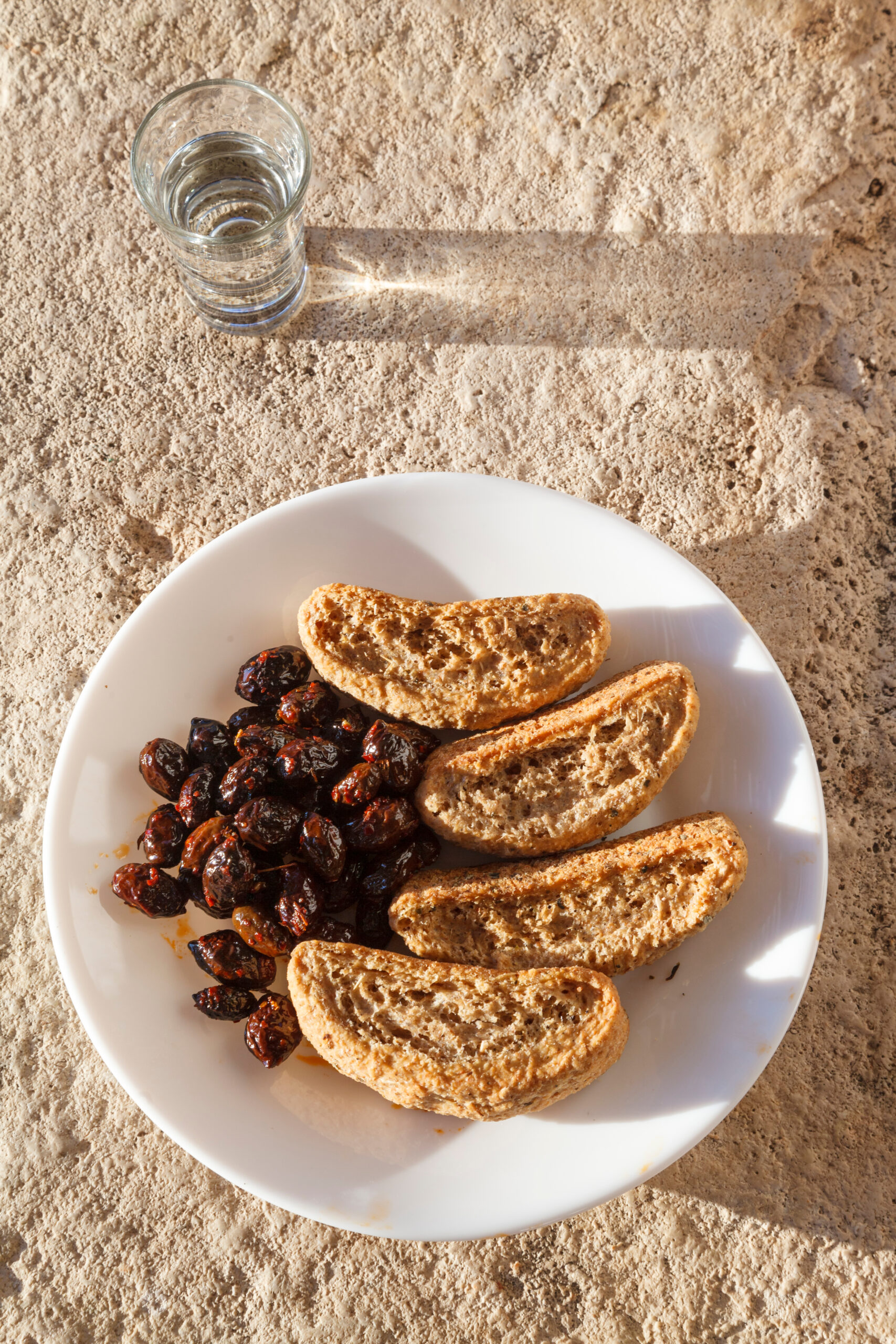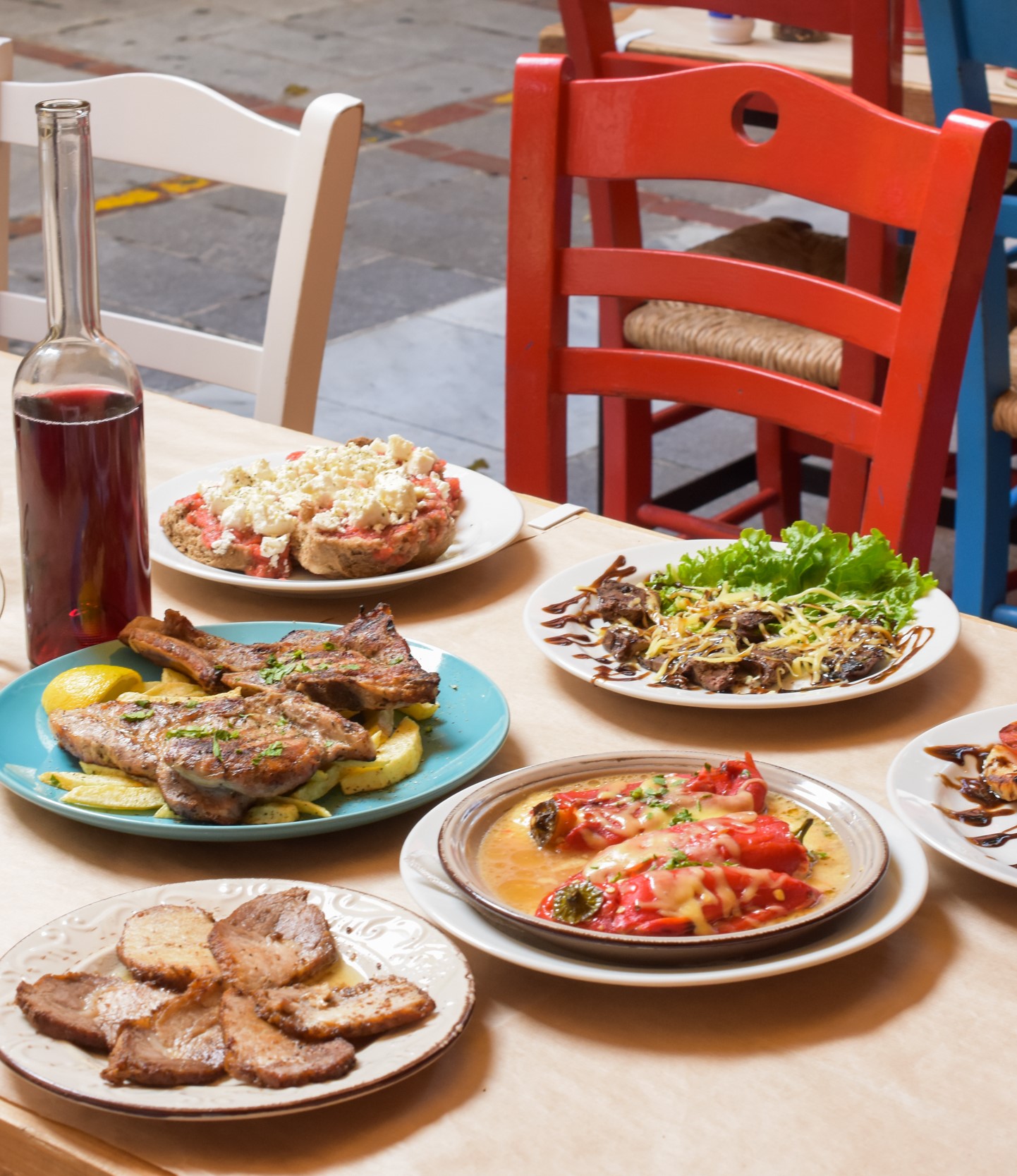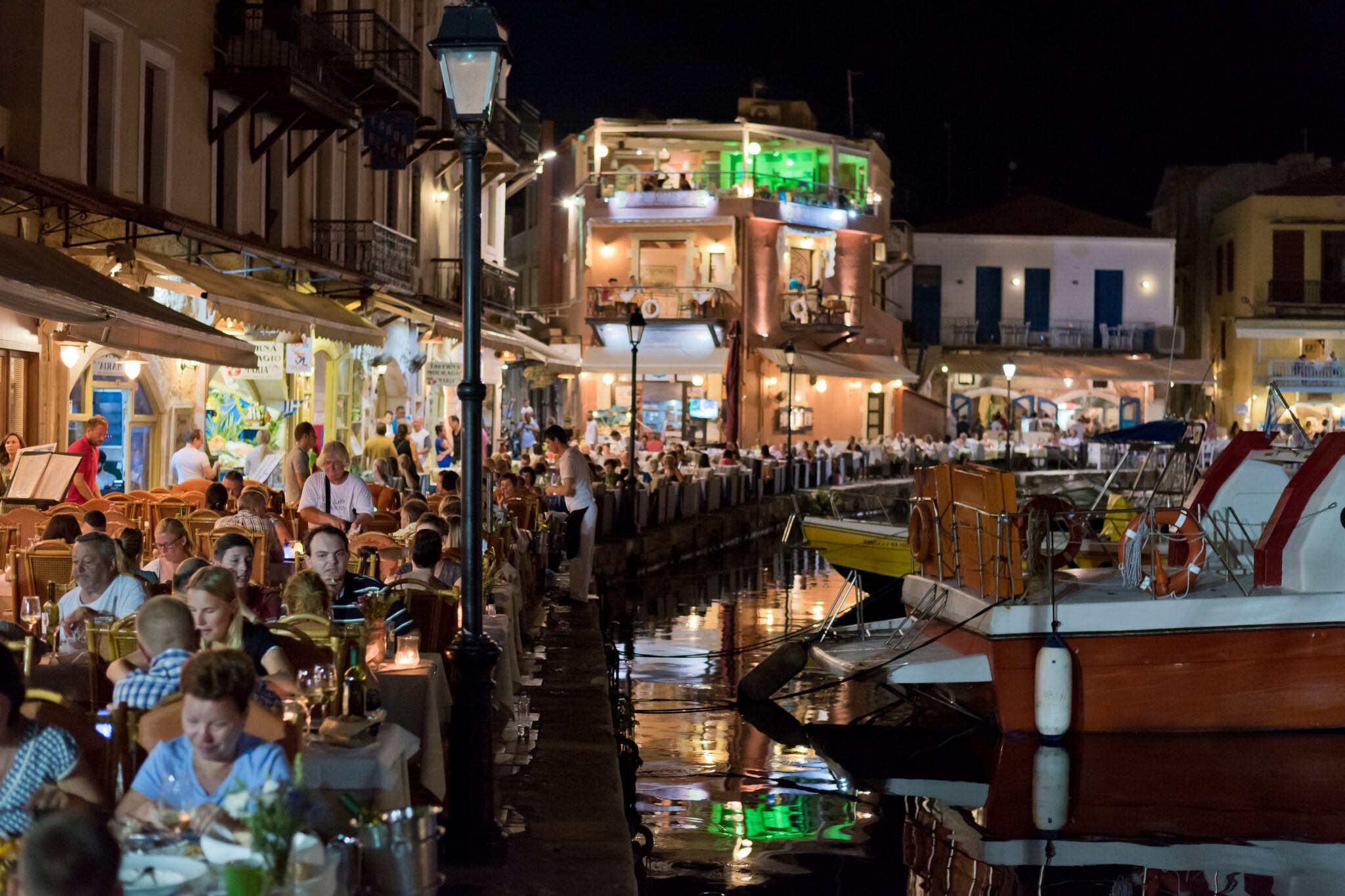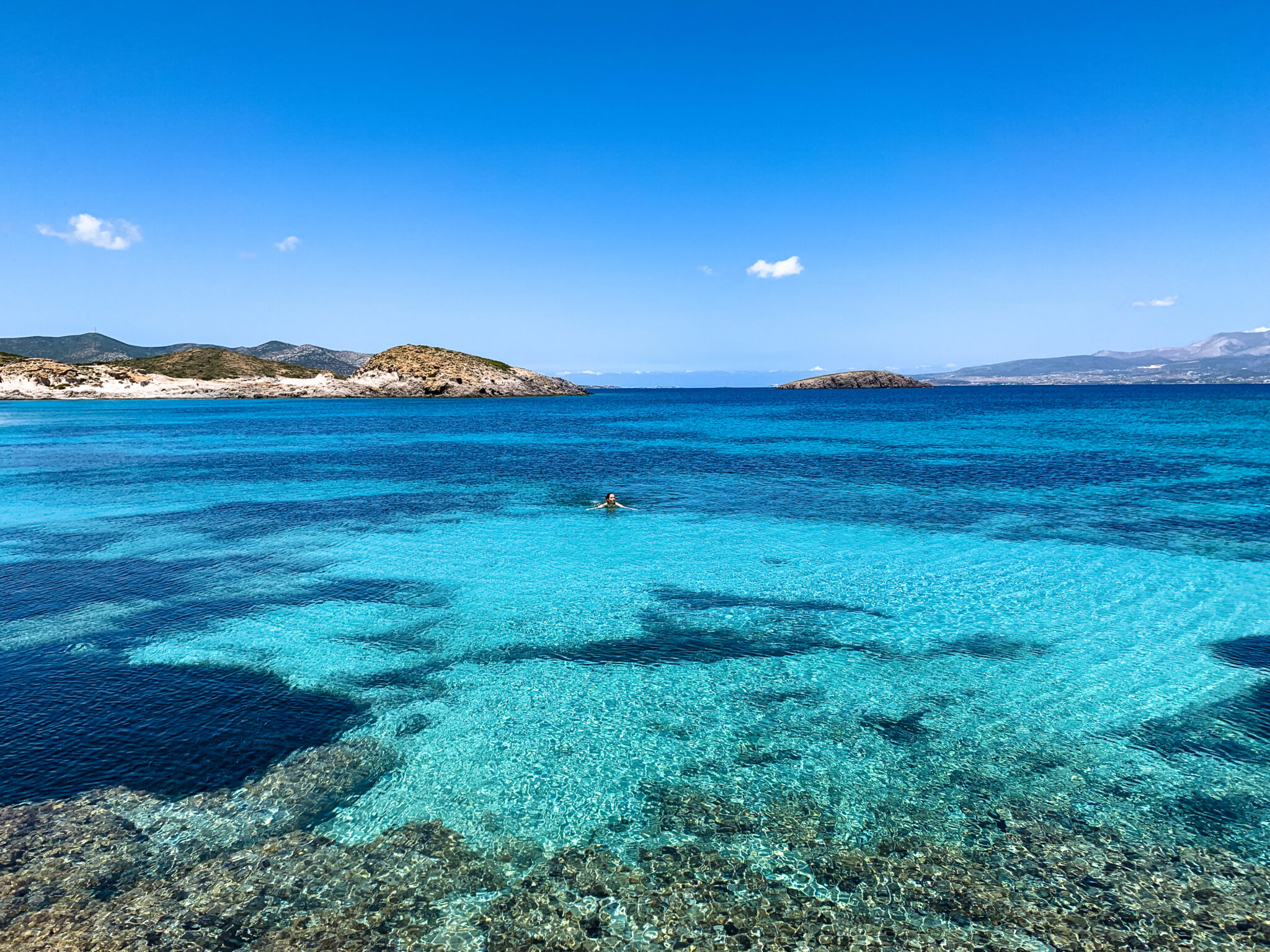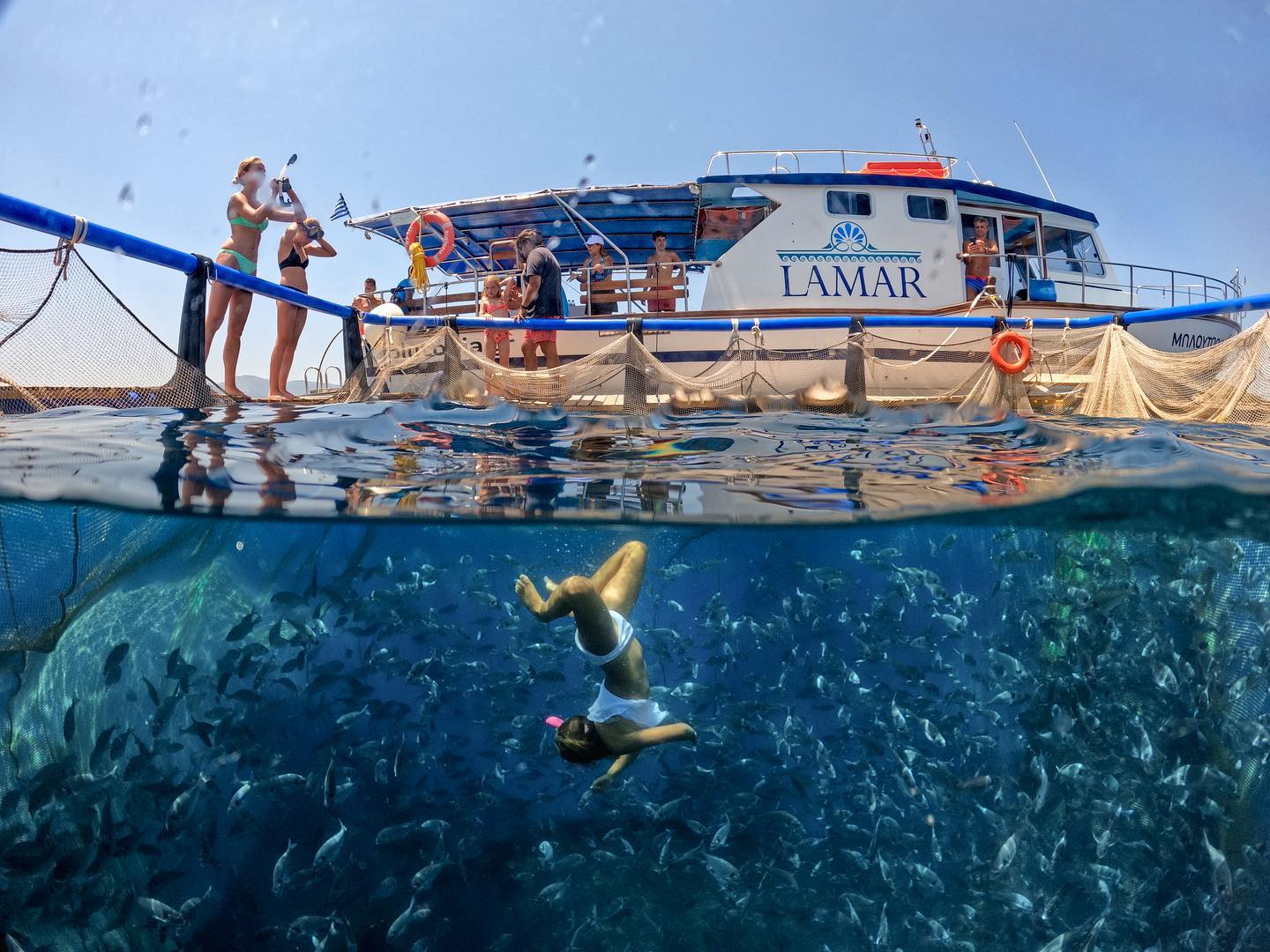A predominantly rural county, where the majority of inhabitants are engaged in livestock farming and olive cultivation, Rethymno has a singular culinary culture. Its difficult terrain for crops has led to a gastronomic style based on simplicity and necessity, with ingredients that could be preserved over long periods, as communication with the city was a challenging affair. Wild herbs, legumes, wild mushrooms, and snails for protein, paired with the products of home cheesemaking, are staples for every family. There was minimal bread consumption, and bread was made primarily from primarily barley, as were the ’paximadia’ (rusks), which could withstand time and justify the lighting of wood-fired ovens, using scarce wood supplies.
Meat was only served at celebrations, weddings, and baptisms, sparsely, usually from large animals and boiled to last longer, with rice cooked in their broth. Pork from pig slaughters was turned into sausages and ‘apakia’ (cured pork), in their fat, while some parts stewed with spices. Every family slaughtered a pig before Christmas, and the meat lasted until Easter, when the land began to yield its own produce. ‘Apaki’ in Rethymno is flavoured with cumin and after being smoked with sage, it is rinsed in vinegar, acquiring a distinctive, characteristic flavour. The same often happens with the sausages; a little smoked sausage or ‘syglino’ or apaki was enough to add flavour and necessary fats to dishes with legumes and herbs.
Cumin and mint – the ‘varsamo’ – are the primary spices of Rethymno’s cuisine and are frequently used, from ‘dolmadakia’ (stuffed vine leaves) to casserole dishes. Some meat dishes with grape must syrup or honey, and the fact that boiled meat is often served with honey are considered Byzantine influences, while the savoury ‘mizithropitakia’ (small cheese pies), with sugar and honey, are ancient Greek influences. Despite fish not being as prevalent in the local cuisine, grouper with okra remains one of the island’s top seafood dishes.
Recipies from Rethymno
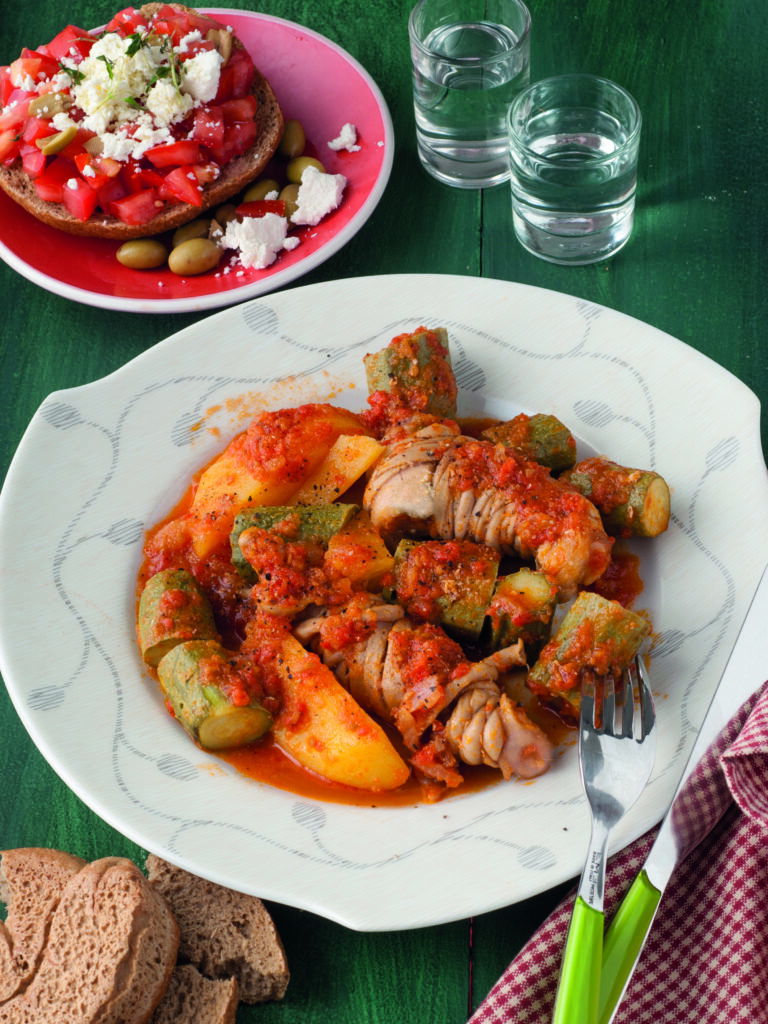
Stuffed Lamb Stomachs with Zucchini
Serves 6
Preparation: 45 minutes
Cooking time: 1 hour
Ingredients
1 lamb stomach and intestines
6 tbsp extra virgin olive oil
1-2 cloves of garlic
1 onion, finely chopped
1 kg small and tender zucchini
2 ripe tomatoes, diced (optional)
2 potatoes, cut into cubes
Salt and pepper
Procedure
Thoroughly wash the lamb stomach, scald it in boiling water, and scrub it well to clean. Wash the intestines, turn them inside out, wash them with lemon and water, and turn them back. Cut the lamb stomach into 10 cm square pieces and wrap each piece with intestines, tying them at the end to prevent unwrapping. In a pot, heat the olive oil and brown the lamb stomachs, garlic, and onion. Add 2 glasses of water and simmer over medium heat until partially cooked. Add the zucchini, whole if small or thick slices if large, the potatoes, and tomatoes. Season with salt and pepper, and simmer over low heat until the sauce thickens.
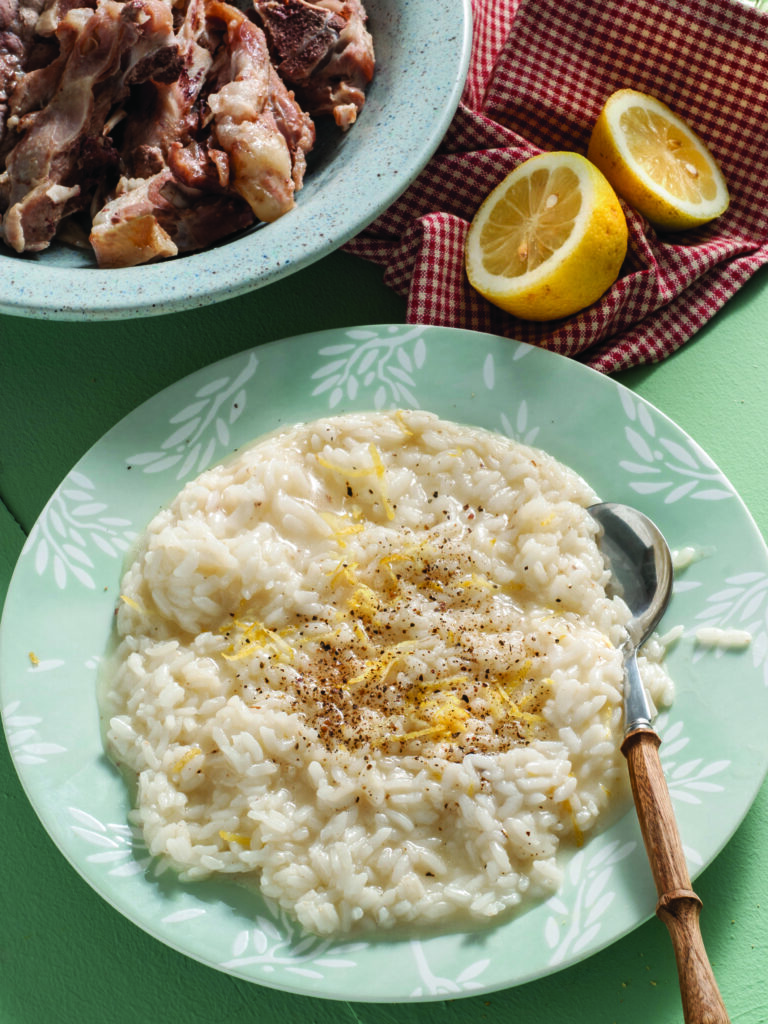
‘Pilafi Kritiko’ (Cretan Pilaf)
In Crete, wedding pilaf exclusively refers to the rice served at weddings, and even in that context, the name was given by the out-of-town guests to describe the abundant rice on the tables. Everything else is pilaf or, in simpler terms, rice.
Serves 4-6
Preparation: 20 minutes
Cooking time: 2½-3 hours
Ingredients
1 kg zygouri (sheep that has not yet lambed), in large pieces
1 kg mature sheep, in large pieces
1 kg free-range rooster, in large pieces
1 large dried onion, cleaned
2 glasses of Carolina rice
Zest and juice of 2 unwaxed lemons
Salt and pepper
Procedure
In a deep pot, first, add the lamb with enough water to cover the meat and a little more. When it comes to a boil, skim off any foam and add the sheep. Add more water and when it boils, skim off the foam again. Then add the rooster and water, and when it boils, skim off the foam once more. At this point, add the whole onion and let the meat simmer. Occasionally pierce it with a fork to check if it’s done. Once a piece is cooked, remove it and place it in a dish, waiting for the rest. When the process is complete, take the broth that the meat has produced and strain it into a separate dish.
What remains of the meat is roasted in a glass baking dish. Heat the oil in a small pot, add the rice and the large piece of onion, and pour in the broth left over from boiling the meat. Let it boil for 20-25 minutes until the rice absorbs all the broth, thickens, and begins to take on some colour. Add the lemon zest and juice, and season with salt and pepper according to your preferences. Serve the pilaf hot, accompanied by the pieces of meat that were set aside.
Rice: Using the same cup used to measure the rice, measure the broth, calculating 4 cups of broth for every 1 cup of rice, and for every cup of rice, the juice of 1 whole lemon. Pour the measured broth into a saucepan and once it comes to a boil, add the measured rice. Season with salt and while the rice simmers in the broth over medium to low heat, continuously stir to prevent it from sticking. Just before the rice absorbs all the broth, turn off the heat and continue stirring while adding the lemon juice and zest from the 2 lemons. Let it rest for 1 minute and serve it piping hot.
Tips
How to eat the boiled meats: Eat the lamb as it is, seasoned with coarse salt. The sheep is tasty with a drizzle of thyme honey and fresh thyme. The chicken is best with lemon-olive oil dressing and oregano. During gatherings and at the table, Cretans also say, “We don’t strain the pilaf until the last guest is seated,” which means that since it is eaten hot, it is added to the pot at the last moment.
Stuffed Vine Leaves & Zucchini Blossoms
This meze showcases a cook’s skills. Even the humblest taverna will serve you a delicious version of this recipe.
Serves 6-8
Preparation: 1 hour
Cooking: 45 minutes
Ingredients
1½ kilograms fresh vine leaves
½ kilogram zucchini blossoms
For the filling
1½ kilograms fresh tomatoes, grated, and their juice
750 grams zucchini, grated
200 grams tomato pulp
1,250 grams Carolina rice
A handful of fresh mint, parsley, dill, and finely chopped spring onions
400 grams dried onions, grated
100 ml extra-virgin olive oil
Juice of 2 lemons
Salt and pepper
1-2 potatoes, sliced into thick round pieces, for the bottom of the pot
Procedure
In a pot, add water and a little olive oil. Once it boils, blanch the fresh vine leaves for 2-3 minutes and then strain them. Take a large bowl and add all the ingredients for the filling, which we have chopped by hand and grated. We don’t use a mixer at all, as it won’t result in tasty dolmadakia. After preparing the filling, taste for saltiness. We want it to be juicy enough, and if it’s not, we add a little tomato juice. We wrap the vine leaves and fill the blossoms with 1 teaspoon of filling each. First, we place the sliced potatoes in a layer at the bottom of the pot, then the vine leaves, followed by the blossoms, and finally, any remaining juice from the bowl is poured into the pot. We drizzle with another 100 ml of olive oil, place a plate on top, and secure our dolmadakia so that they don’t open while cooking. We cook them over medium to low heat for about 40 minutes. They are delicious when served with sheep’s milk yogurt.
Tips
In some regions of the island, they also add a touch of cumin to the filling.
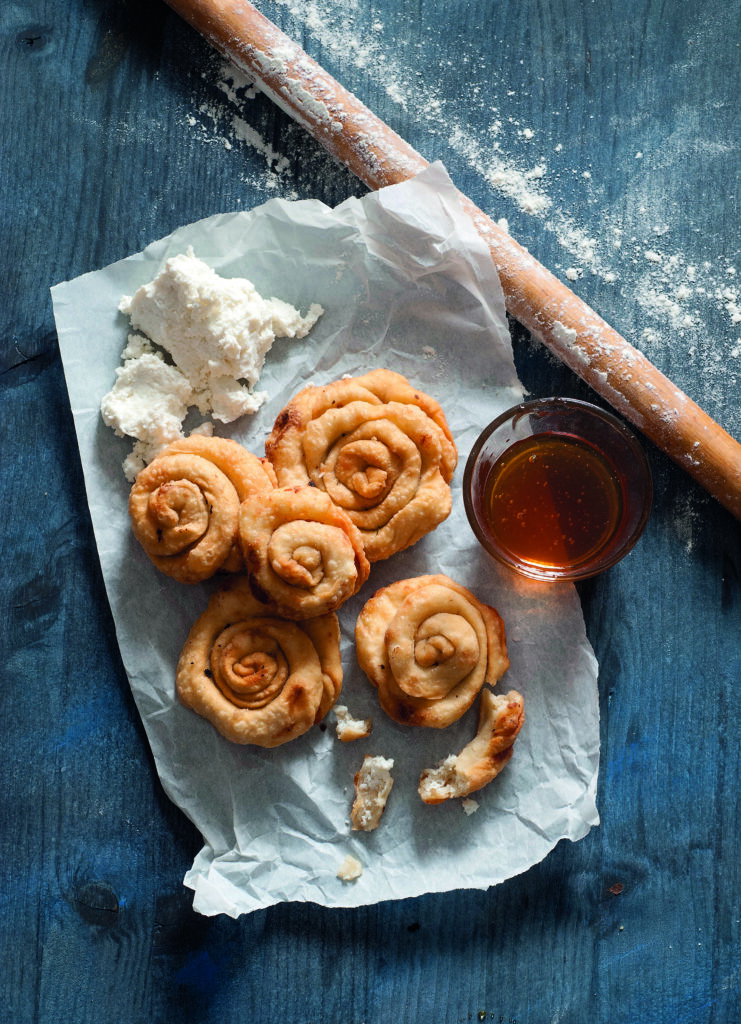
Sarikopites
This is an elevated version of myzithropita, named after the way the dough is rolled, resembling sariki, a traditional headscarf worn by Muslims.
Makes approximately 30 pieces
Preparation time: 20 minutes
Resting time: 20 minutes
Frying time: 5 minutes
Ingredients
1 kilogram hard flour
2 cups water
1 cup extra-virgin olive oil
½ cup raki (traditional Greek spirit)
Juice of 1 lemon
2 teaspoons salt
1 kilogram myzithra cheese (or any other soft cheese)
Extra-virgin olive oil for frying
Honey for serving
Procedure
In a large bowl, combine the flour, water, olive oil, raki, lemon juice, and salt. Mix well with your hands and knead until a soft and smooth dough forms. Cover with a cotton towel and let it rest for at least 20 minutes. Divide the dough into medium-sized balls and on a lightly floured surface, roll out each ball into a thin round sheet. Using a knife, cut the sheet into strips (approximately 5-6 x 20-25 cm). Along the length of each strip, spread 1-2 tablespoons of myzithra cheese and roll it up tightly, forming a spiral shape like a sariki (snail). Secure the end at the bottom. In a deep pot, heat plenty of oil over medium heat. Once hot, fry the sarikopites in batches for about 5 minutes, or until golden brown. Remove with a slotted spoon and let them drain on absorbent paper for 2-3 minutes. Serve them warm, either plain or drizzled with honey.
Tips
With these ingredient proportions, the pastry will be thin and crispy. If you prefer it softer, add ½ cup of oil.
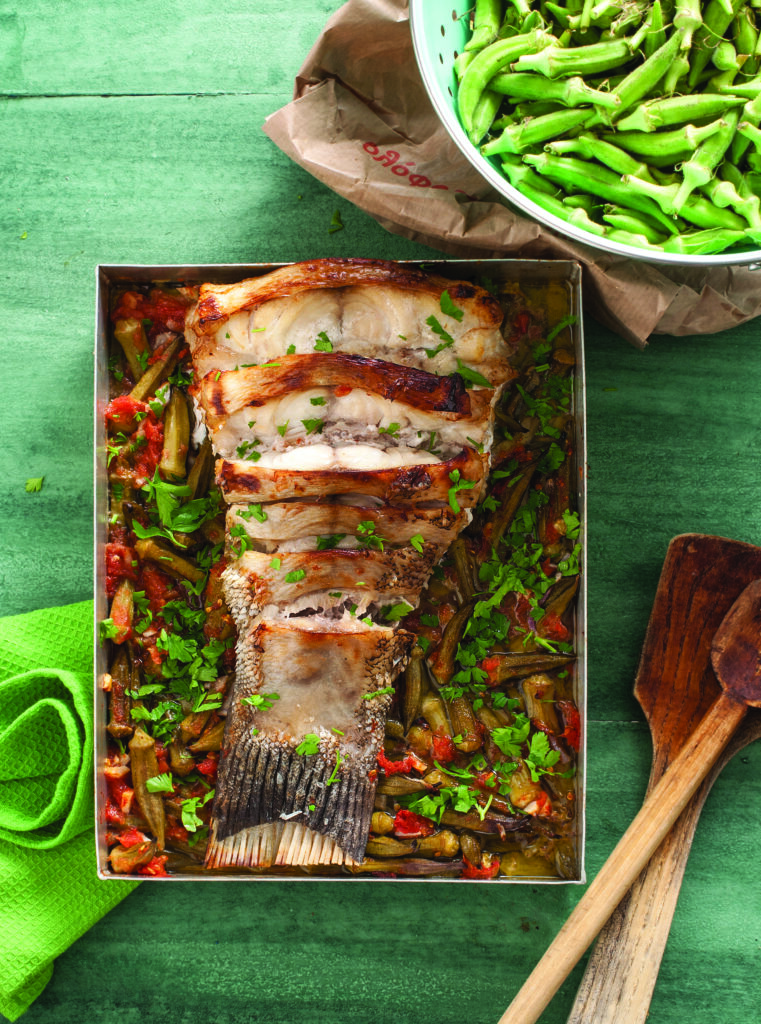
Oven-Baked Grouper with Okra
This is the ‘royal’ meze of Crete, savoured from one end of the island to the other. It is a dish fit for feasting and formal invitations, and both the okra and the grouper must be in season.
Serves 4
Preparation: 1 hour
Cooking time: 1 hour 30 minutes
Cost: £11.20 per serving
Ingredients
1 fresh whole grouper (about 1½ kg), cleaned (ask your fishmonger to do this) or slices from a larger fish
1 kg fresh okra
2 dry onions, finely chopped
2 garlic cloves, finely chopped
½ bunch parsley, finely chopped
1 cup extra virgin olive oil
4 tomatoes, peeled and grated
1 tsp sugar
Salt & pepper
Procedure
Preheat the oven to 180°C (fan). Salt the fish thoroughly inside and out and leave it in a colander for a while. Place the fish standing upright in a large baking tray (with its belly touching the tray) and scatter the okra around it. Add the onions, garlic and parsley, lightly mixing them in. Drizzle with the oil and tomatoes. Sprinkle with sugar and season well with salt and pepper. Bake for 1 to 1½ hours, until the okra softens and the fish cooks thoroughly. Serve hot or cold.
Tips
Peel the tomatoes by scoring their bases crosswise with a sharp knife and blanching them in hot water for ½ minute before immediately plunging them into a bowl of water and ice. Clean the okra with a small sharp knife, cutting off the stem and peeling the skin around the cone-shaped top. Be careful not to completely remove the top to avoid the seeds spilling out during cooking. Sprinkle the okra with 2 tbsp vinegar and season with ½ tsp salt. Rub them well with your hands and spread them out on a baking tray. Roast in the oven at 200°C (fan) for 10-15 minutes. This way, the okra will maintain its flavour intact.
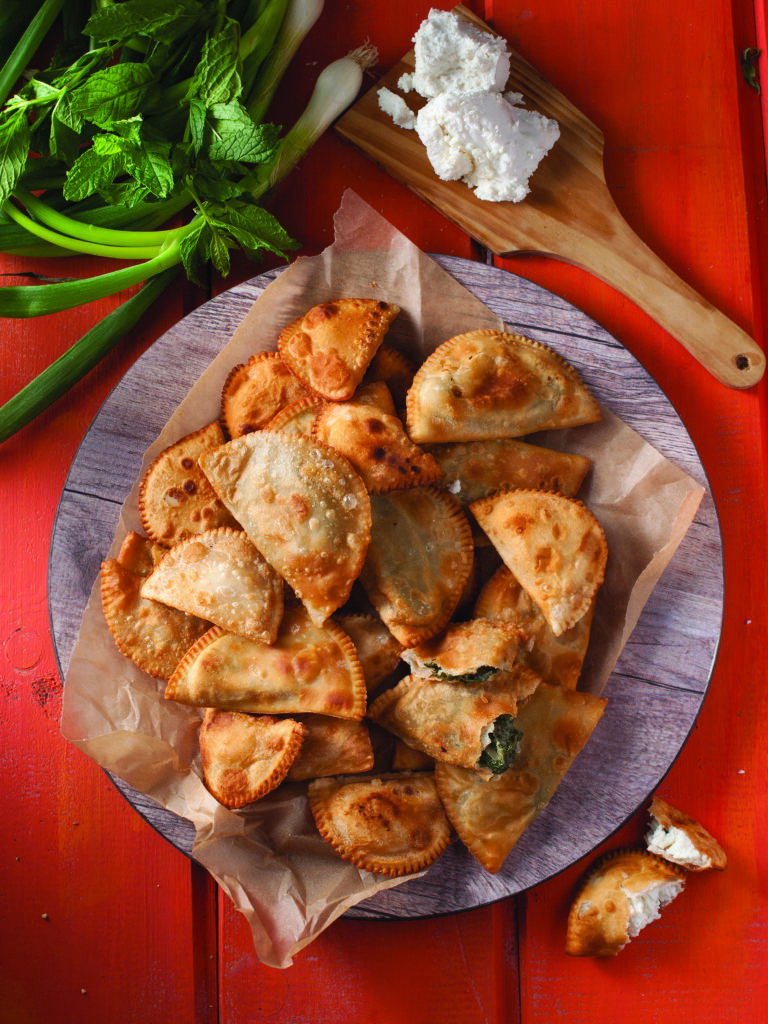
Kalitsounia & Hortokalitsouna
Serves 4-6
Preparation: 1 hour
Frying: 5 minutes
Pot: 5 minutes
Rest: 1 hour
Cost: £1.80 & £1.20 per serving
Ingredients
For the dough
½ kg soft flour
1 tsp salt
3 tbsp raki
2 tbsp extra virgin olive oil
Approximately 1 cup of lukewarm water
For the greens filling
1 kg greens (courgette tops, amaranth blossoms, courgette blossoms)
1 onion, finely chopped
Salt & pepper
½ bunch mint, finely chopped
½ bunch fennel, finely chopped
½ cup extra virgin olive oil for frying
For the cheese filling
200 g sour myzithra cheese
200 g soft cheese, grated.
Procedure
Dough: Knead the flour, salt, raki, and oil by hand or in a mixer, gradually adding the water. If the dough is soft, continue kneading as the released gluten helps. If it continues to stick, add more flour. When the dough stops sticking to your hands and is soft, it’s ready. Let it rest for about 1 hour, smeared with oil and covered with cling film.
Filling with greens: In a pot on low heat, wilt the finely chopped greens, without any liquid. Transfer them to a colander, let them cool a bit and then squeeze them well with your hands. Add the onion, salt, pepper, and herbs.
Filling with cheese: Mix the cheeses together.
Assembly: Cut pieces from the dough and roll them out into paper-thin sheets with a rolling pin or pasta machine. Cut out discs using a wide glass. Add a teaspoon of filling on one half of each disc, fold over into a half-moon shape, and press the edges with a fork to seal. Fry in hot oil. Flip and cook on the other side, then remove and drain on absorbent paper.
Tips
Depending on the season, the filling for the hortokalitsouna alters. In wintertime, up to 14 different types of greens can be used in the filling; the more aromatic, the better. If you want to avoid frying, you can bake them in the oven, but first, brush them with oil to prevent them drying out.
Rethymno Raw Materials
While the rest of Crete is known for its exceptional extra virgin olive oil, the product that truly characterises the Rethymno region is none other than sheep’s and goat’s milk. Livestock farming predominates throughout the entire prefecture, providing the raw materials for the PDO Graviera Crete (made from sheep’s and goat’s milk, aged for at least three months), PDO xinomyzithra Crete (a fresh soft cheese made from sheep’s and goat’s whey, with added milk), kefalotyri, dry anthotyro, as well as beloved fresh curd cheese, sheep’s and goat’s yoghurt, creams and fresh cheeses.
Rethymno is home to over 5,000 livestock farmers, both small and large-scale, and every year produces 23,000 tons of milk, the majority of which is supplied to cheese factories for the production of top-quality cheeses. The cultivation of olive trees yields the Throumba-type olive and exceptional quality olive oil from Tsounates or Koroneiki olives. Also recognised is the PDO North Mylopotamos Rethymno extra virgin olive oil.
Although according to unofficial estimates, there are over 3,500 vineyard owners in the prefecture, very few of them own more than five acres. Thus, the over 0.9 acres, scattered from north to south, are primarily used in local winemaking and, of course, in the production of tsikoudia. New or older small wineries have the potential for exceptional winemaking in the future. Since 2011, the PGI Rethymno (Protected Geographical Indication), which practically covers all the vineyards in the prefecture, has received recognition.
In the products of Rethymno, we also distinguish the “xinohondros” (a type of sour trahana), which is made with sheep’s and goat’s milk after souring, crushed wheat, and olive oil. Xinohondros, as well as regular trahana, star in many dishes, sometimes with vegetables alone, like with potatoes or zucchini, and other times along with snails, such as eggplant with xinohondros and snails.
Carob is one of the crops that, during hard times like the period of the Occupation in World War II, helped the Cretans survive, and still serves as an ideal substitute for chocolate, sugar, and cocoa. As a crop, after many years of being left in obscurity, it has made a dynamic comeback, yielding dozens of products that are not only exported to mainland Greece but throughout Europe.
The cuisine of Rethymno has incorporated all the products produced in the region into its gastronomic culture, creating exceptionally tasty recipes. To the products that the local cuisine loves, let’s add sausages, ‘syglino’, and ‘apaki from local pigs, ingredients that are used in dozens of recipes.




